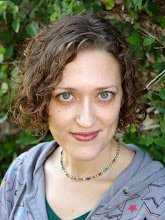And sometimes you just don’t….
Over the last couple of weeks, my class has focused on the inverted pyramid style of writing. I’ve already mentioned the “lede” sentence or paragraph, which provides the reader with the most important information of the story right up front. However, it often doesn’t answer every one of the “what, when, where, why, or how” questions. That’s where the next most important paragraph of the story comes in: the nut graf. According to Wikipedia, it’s also known as the nut graph, nut 'graph, nutgraph and nutgraf; a contraction of nutshell paragraph, from the expression "in a nutshell".
Blogger Chip Scanlan elaborates on the definition of a nut graf as he explains that, “The nut graf tells the reader what the writer is up to; it delivers a promise of the story's content and message. It's called the nut graf because, like a nut, it contains the "kernel," or essential theme, of the story.” He goes on to mention that reporters and editors at “The Philadelphia Inquirer” refer to the nut graf as the "You may have wondered why we invited you to this party?" section.
The lede and nut graph function as an important element of the inverted pyramid style of news writing and its purpose of getting information to the readers quickly and enabling them to move through the story easily. Or to help them decide whether or not to move through the story at all.
In his explanation of the purpose of the nut graf, blogger “Tei” states that,“In my experience, frequently the nut graf is where one of two things happens: either you get really psyched about what you’re about to learn, or you find out that you were suckered by the lede and this article isn’t about what you thought it was about.”
Along with allowing the reader to decide quickly whether or not they want to continue on with any given story, the inverted pyramid style of writing also organizes information in a way that allows the reader to be efficient. It puts the most important and up to date information at the top of the story and progressively leads to the least important information. This also allows for editing to occur by simply chopping off the from the bottom of the story, should space end up being an issue in the layout of the paper.
But back to my initial statement at the beginning of the blog…Although I understand the point of this style of news writing and can see how it functions well for the purpose of getting news out quickly, there is a part of me that takes issue with it. As I’ve been thinking about this, I can’t decide if I’m simply getting frustrated because I don’t feel particularly comfortable with learning a new form of writing, which can obviously change with practice and education. Or if this style of writing is simply not what I’m cut out to do. I don’t feel like I have a clear enough idea of myself as a journalist to be able to answer that question completely. That being said, the issue that I have with the syle itself is the fact that, along with allowing for the reader to be more efficient, it also enables the fast paced, immediate form of news distribution that has become the norm in our society. As efficient as the inverted pyramid style of writing has been, it has allowed for people to become used to getting important information quickly without needing the patience to read through an entire story. It has enabled the attention-deficit form of news reporting that our society is so used to at this point. Trying to get someone to read through an entire article to get to a point at the end would seem like asking too much. The difference in people’s ability to stay focused, particularly when receiving information through lecture or writing, from years ago to today can be pretty disturbing. As more and more people turn to the internet to get quick, “sound bite” information, I can’t help but wonder if newspapers shouldn’t consider a return to more in-depth, storytelling style of writing to get the attention of those people that still appreciate a good book or longer, more informative article.
Or, like I mentioned ealier, maybe it’s just me and all I need to do is get more comfortable with that particular style of writing. Especially since I’d never really had an issue with it before actually thinking about it with these classes. I guess I’ll just wait and see…

No comments:
Post a Comment